Almond Milk Tea | Badam Tea
Badam tea, also known as almond tea, is a delightful beverage that combines the rich flavors of almonds with the comforting warmth of tea. This unique blend creates a harmonious and invigorating drink that is enjoyed by many around the world. Badam tea is particularly popular in India, where it is a traditional beverage and is often served as a welcome drink or as a part of special occasions.
Various spices and flavorings are often added to make badam tea more tasty and aroma. Common additions include cardamom, saffron, cinnamon, or rose water, which contribute to the overall sensory experience. Sweeteners such as sugar, honey, condensed milk or almond milk are frequently used to balance the nutty bitterness of the almonds and create a comforting sweetness.
Whether enjoyed hot or cold, badam tea offers a unique and enjoyable drinking experience. Its nutty flavor profile, coupled with the warmth of tea and the subtle nuances of spices, creates a delightful and comforting beverage that can be savored at any time. So, the next time you seek a flavorful and invigorating drink, consider trying a cup of badam tea for a delightful taste adventure. Almond tea can be served with morning breakfast & evening snacks.
In addition to its delicious taste, badam tea is also known for its potential health benefits. Almonds are a good source of healthy fats, protein, and essential nutrients, including vitamin E and antioxidants. Tea, depending on the type used, can provide various health benefits as well, such as antioxidants and potential metabolism-boosting properties.
Overall, badam tea is a delightful beverage that combines the goodness of almonds with the comforting qualities of tea. It is enjoyed for its rich flavors, aromatic profile, and potential health benefits, making it a popular choice among tea enthusiasts and those looking for a unique and satisfying drink.
Spices and Herbs I Add
Cardamom: Add a few crushed cardamom pods or a pinch of cardamom powder for a fragrant and aromatic twist.
Cinnamon: A small piece of cinnamon stick or a sprinkle of cinnamon powder can add warmth and depth to your badam tea.
Ginger: Grate or finely chop fresh ginger and simmer it with the tea to add a hint of spiciness and a refreshing kick.
Nutmeg: A pinch of freshly grated nutmeg can provide a warm and earthy flavor to your badam tea.
Cloves: Add a couple of whole cloves or a pinch of ground cloves for a touch of warmth and complexity.
Saffron: Infuse a few strands of saffron in warm milk before adding it to your badam tea to impart a delicate and luxurious flavor.
Rose water: A few drops of rose water can lend a subtle floral aroma and a hint of sweetness to your tea.
Remember, the amounts of spices and herbs can be adjusted according to your personal taste preferences. It’s always fun to experiment and find the combination that suits you best.
Which Tea to Use
Black Tea: Black tea is a classic choice for badam tea. Its robust flavor pairs well with the nuttiness of almonds and other spices. Assam tea or Darjeeling tea are popular options for a strong and rich taste.
Green Tea: If you prefer a lighter and more delicate flavor, you can use green tea as the base for your badam tea. Green tea adds a refreshing and grassy note to the beverage.
Herbal Tea: For those who want to avoid caffeine or prefer a caffeine-free option, herbal teas can be a great choice. Herbal teas like chamomile, rooibos, or a blend of various herbs can create a unique and soothing badam tea variation.
Ultimately, the choice of tea depends on your personal preference and the flavor profile you desire. Feel free to experiment with different teas to find the one that best complements the flavors of almonds and other ingredients in your badam tea.
How to make Badam Tea
- Soak the almonds: Take 8-10 almonds and soak them in water overnight or for at least 6-8 hours. This helps in softening the almonds and making them easier to blend.

- Remove the almond skins: After soaking, drain the water and gently press each almond between your fingers to remove the skin. The skins should easily slip off. Alternatively, you can blanch the almonds in hot water for a few minutes and then peel off the skins.

- Blend the almonds: Place the peeled almonds in a blender or food processor and grind them to a fine powder or paste. You can add a little water to help in the blending process, but avoid adding too much to keep the almond flavor concentrated.

- Prepare the tea: In a saucepan, bring 1 cup of water to a boil. Add 1 tablespoon of tea leaves or 1 tea bag (black tea or green tea) to the boiling water and sugar (as required). Let it steep for a few minutes according to your desired strength.

- After that pass the boiled tea water through a sieve.

- Add the almond paste: Make the almond paste or powder for further use.
- Add milk and sweetener: Pour 1 cup of milk into the saucepan. Add 2 tablespoons of sugar, or adjust the amount according to your taste preferences. Stir well to dissolve the sugar.

- Now add the almond mixture after milk gets boiled.

- Afterwards append the already made tea water into it.

- Add spices (optional): If desired, you can add additional spices like cardamom powder or a pinch of saffron strands for extra flavor. You can add saffron strands at last on the ready tea cup as I did. Stir them into the mixture.
- Heat and simmer: Place the saucepan over medium heat and bring the mixture to a gentle simmer. Allow it to simmer for a few minutes to allow the flavors to meld together.

- Strain and serve: Once the badam tea is heated through and the flavors have infused, remove it from the heat. Use a fine-mesh strainer or a tea strainer to strain the tea and remove any tea leaves or large almond particles. Pour the strained badam tea into cups or glasses.
- Garnish and enjoy: Last but not the least garnish each serving with slivered almonds or saffron strands for added texture and presentation. Serve the badam tea hot and enjoy its rich and nutty flavors.

Remember, you can adjust the ingredients and quantities based on your taste preferences. Feel free to experiment with different spices, sweetness levels, or variations to create your own signature badam tea recipe.
Expert tips
Quality ingredients: Use fresh and high-quality almonds, tea leaves or tea bags, and other spices to ensure the best flavor and aroma in your badam tea.
Adjust sweetness: The amount of sugar can be adjusted according to your taste preference. Start with a smaller amount and gradually add more if needed. You can also use alternative sweeteners like honey or maple syrup.
Spice measurements: When adding spices like cardamom or saffron, start with small quantities and adjust to your liking. These spices have strong flavors, so a little goes a long way.
Almond consistency: Experiment with the texture of almonds in your badam tea. You can grind them to a fine powder for a smooth texture or leave them slightly coarser for a bit of crunch.
Infusion time: Let the tea steep for the appropriate time based on the type of tea you are using. Oversteeping can result in a bitter taste, while understeeping may not extract enough flavor.
Simmer gently: While heating the badam tea with milk, ensure you simmer it gently without boiling vigorously. This helps in blending the flavors without scorching the milk.
Straining technique: Use a fine-mesh strainer or a tea strainer to remove any tea leaves or large almond particles from the liquid. This ensures a smooth and enjoyable drinking experience.
Experiment with variations: Feel free to experiment with different spices, herbs, or flavorings based on your personal preferences. You can try adding a touch of cinnamon, a hint of rose water, or a sprinkle of nutmeg to create your own unique twist on badam tea.
Garnish creatively: Elevate the presentation of your badam tea by garnishing with slivered almonds, a sprinkle of ground spices, or even a saffron strand on top. This adds visual appeal and enhances the overall experience.
Enjoy it hot or cold: Badam tea can be enjoyed both hot and cold. If you prefer a cold version, allow it to cool down after simmering and refrigerate before serving over ice. Adjust the sweetness accordingly for the chilled version.
FAQs
Q: Is badam tea healthy?
A: Badam tea can have some health benefits. Almonds are a good source of healthy fats, protein, and essential nutrients like vitamin E. Additionally, tea contains antioxidants and other compounds that may have potential health benefits. However, the overall healthiness of badam tea depends on the other ingredients and sweeteners used. Moderation is key, and it’s important to be mindful of the added sugar content.
Q: Can I use almond milk instead of milk in badam tea?
A: Yes, you can substitute regular milk with almond milk in badam tea. It will still provide the almond flavor, although the taste and texture may be slightly different. Adjust the sweetness accordingly, as some almond milks may already be sweetened.
Q: Can I make badam tea without tea leaves?
A: Yes, you can make badam tea without tea leaves by omitting the tea and focusing on the almond flavor. In this case, you can prepare a simple almond-infused milk by blending soaked almonds with milk and sweetening it to taste. Add spices like cardamom or saffron for additional flavor if desired.
Q: Can I make badam tea with pre-made almond paste?
A: Yes, if you have pre-made almond paste, you can incorporate it into your badam tea. Simply add a spoonful of almond paste to the brewed tea and milk mixture, and stir until well combined. Adjust the sweetness and other flavors according to your taste.
Q: Can I use other nuts instead of almonds in badam tea?
A: While badam tea traditionally uses almonds, you can experiment with other nuts like cashews or pistachios to create variations of nut-infused tea. The flavors and textures may differ, so adjust the quantities and other ingredients accordingly.
Q: Can badam tea be enjoyed cold?
A: Yes, badam tea can be enjoyed both hot and cold. If you prefer a cold version, allow the tea to cool down after brewing and refrigerate it. Serve it over ice and adjust the sweetness accordingly for a refreshing iced badam tea.
If you like this recipe then Try our other Tea Recipes
Please be sure to rate this recipe or leave a comment below if you have made it. For more veetarian inspirations, Sign Up for my emails or follow me on Instagram, Youtube, Facebook , Twitter or Pinterest.
Almond Tea Recipe Card
Equipments
Ingredients
- 1 cup Water
- 8-10 Almonds
- 1 cup Milk
- 1 tablespoon Tea leaves/Tea bag
- 2 tablespoon Sugar (or add as required)
- ¼ teaspoon Cardamom powder (optional)
- A pinch of Saffron strands (optional)
- Silvered Almonds for garnishing (optional)
Instructions
- Take 8-10 almonds and soak them in water overnight or for at least 6-8 hours. This will help in softening the almonds and making them easier to blend.2. After soaking, drain the water and gently press each almond between your fingers to remove the skin. Alternatively, you can blanch the almonds in hot water for a few minutes and then peel off the skins.3. Place the peeled almonds in a blender or food processor and grind them to a fine powder or paste. You can add a little water to help in the blending process, but avoid adding too much to keep the almond flavor concentrated.4. In a saucepan, bring 1 cup of water to a boil. Add 1tablespoon of tea leaves or 1 tea bag (black tea or green tea) to the boiling water and sugar (as required). Let it steep for a few minutes.5. After that pass the boiled tea water through a sieve.6. Now Make the almond paste or powder for further use.7. Pour 1 cup of milk into the saucepan. Add 2 tablespoons of sugar, or adjust the amount according to your taste preferences. Stir well to dissolve the sugar.8. Now add the almond mixture after milk gets boiled.9. Afterwards append the already made tea water into it.10. Place the saucepan over medium heat and bring the mixture to a gentle simmer. Allow it to simmer for a few minutes to allow the flavors to meld together.11. Once the badam tea is heated through and the flavors have infused, remove it from the heat. Use a fine-mesh strainer or a tea strainer to strain the tea and remove any tea leaves or large almond particles. Pour the strained badam tea into cups or glasses.12. Last but not the least garnish each serving with slivered almonds or saffron strands for added texture and presentation. Serve the badam tea hot and enjoy its rich and nutty flavors.


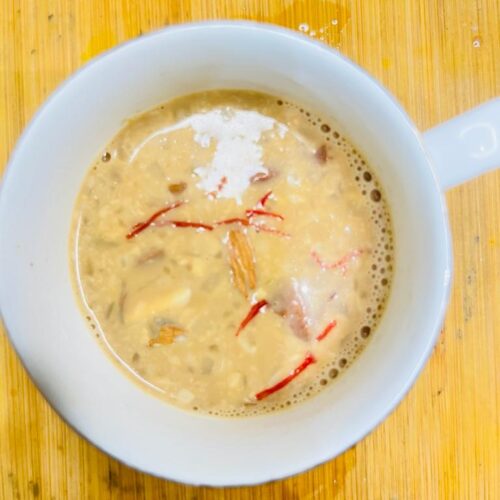
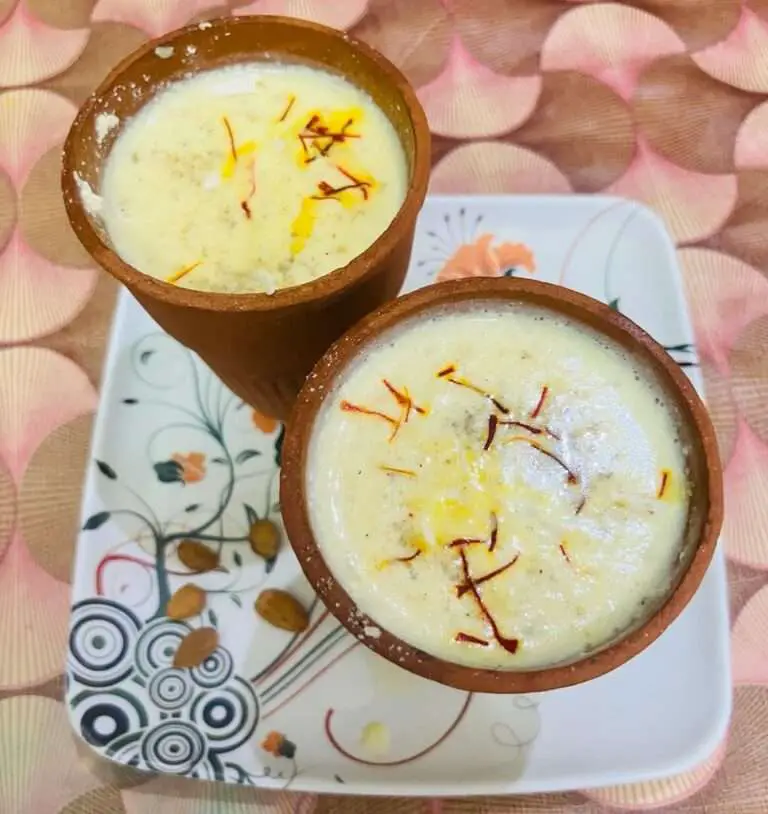

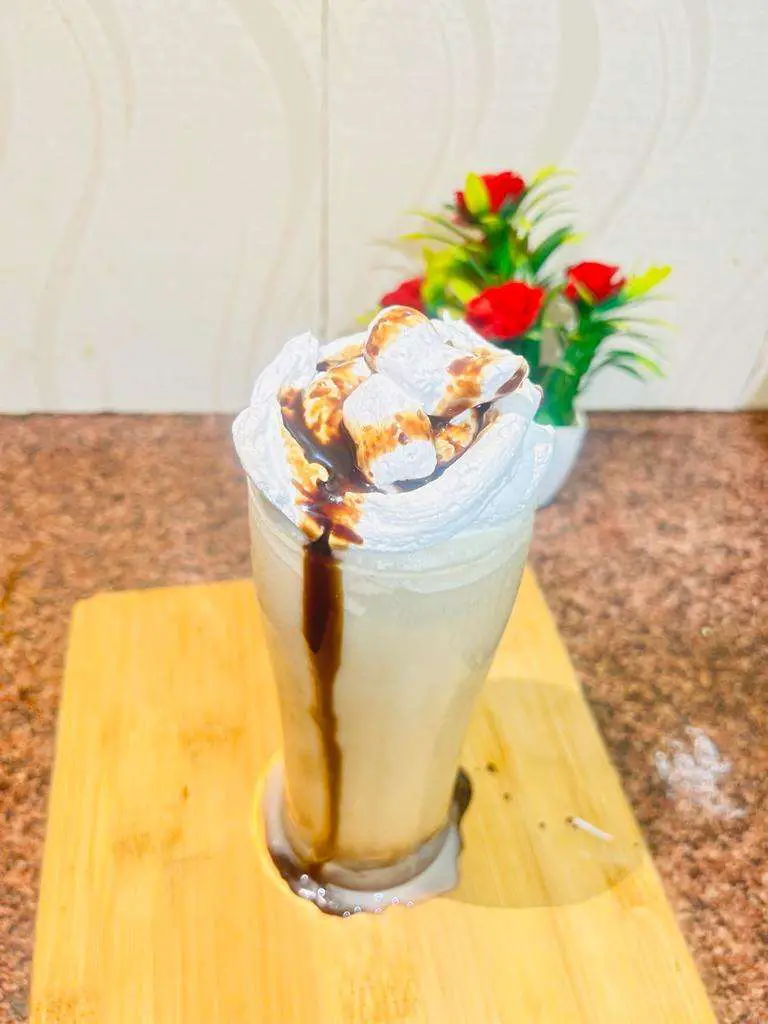
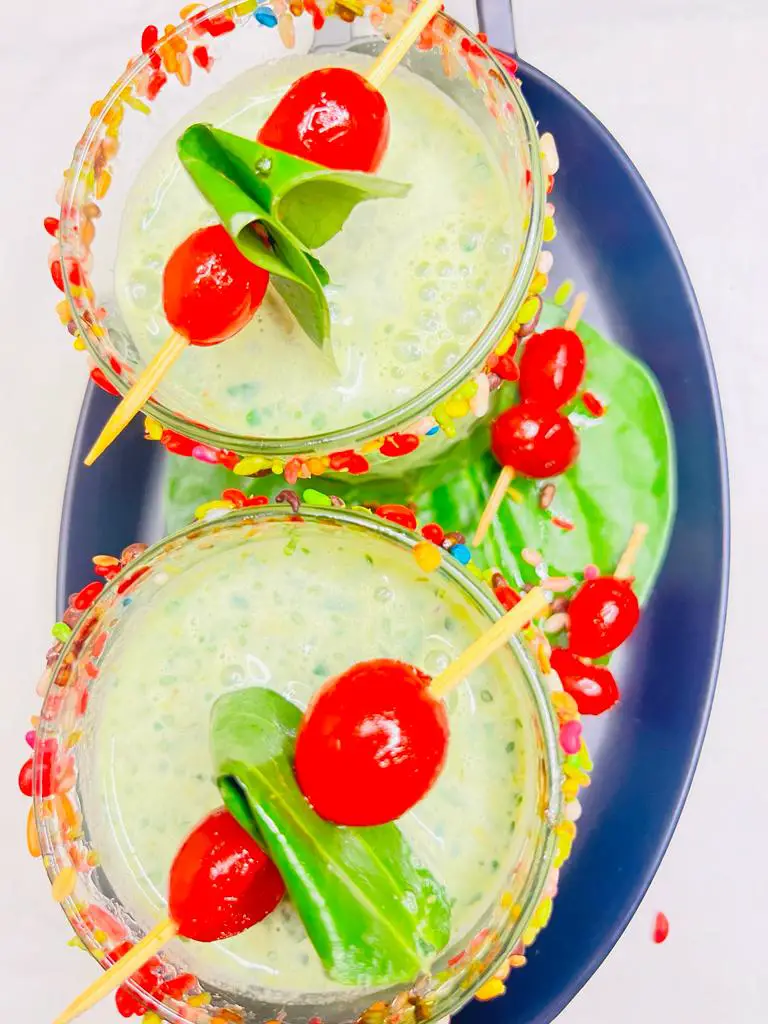
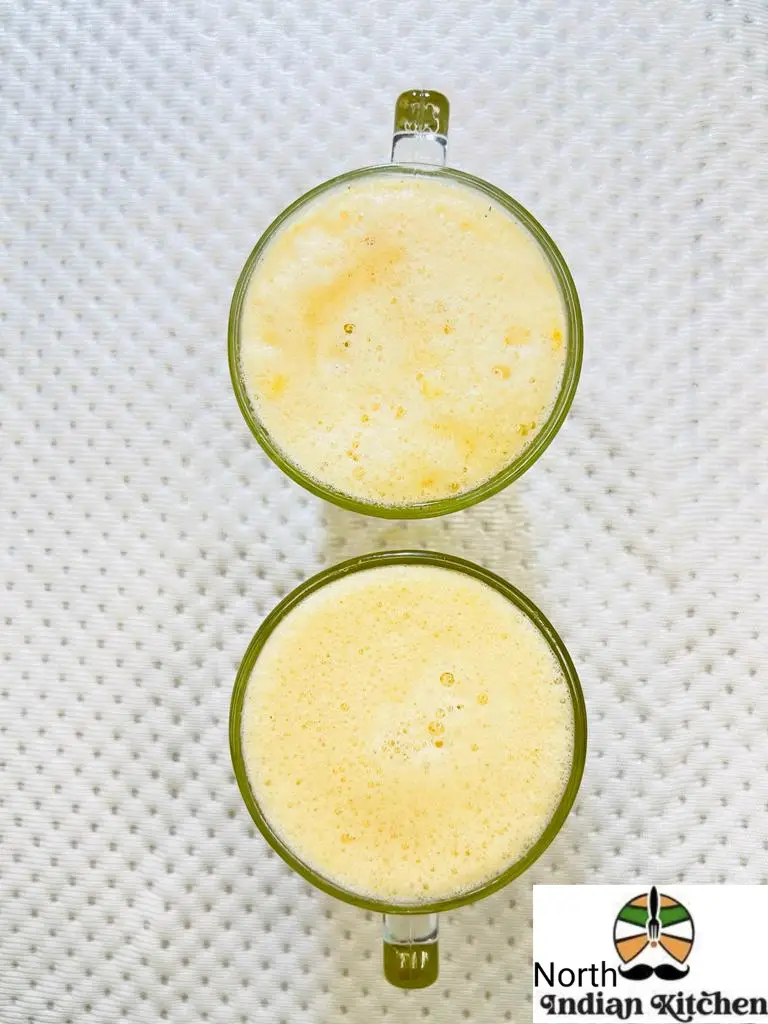

it tastes even better than great or really good.
Thanks for your feedback. We are very glad that you like our recipes.